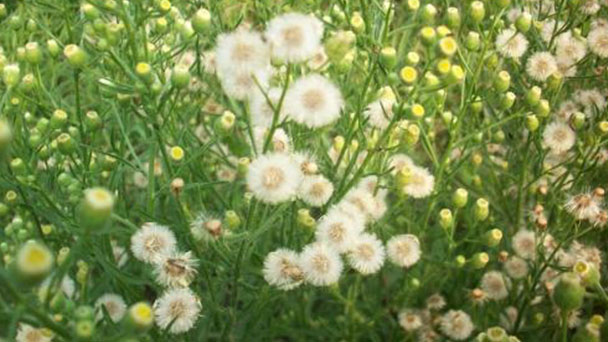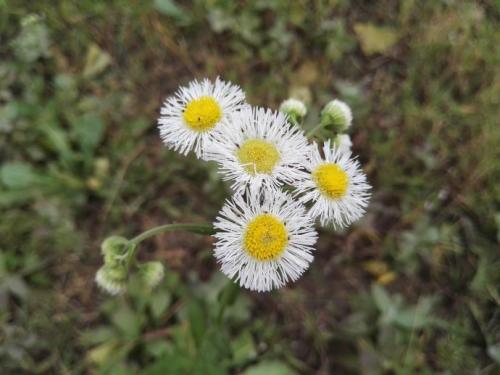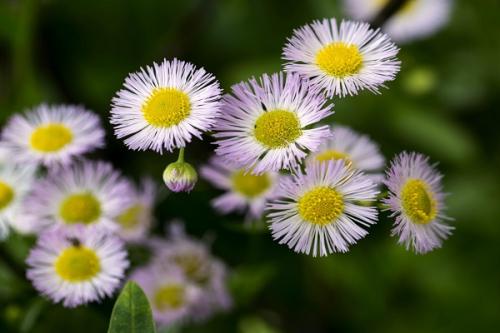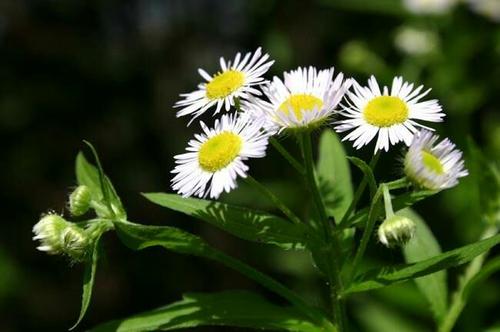Aspen fleabane (Erigeon speciosus) profile
Written by Maggie
Mar 02 2021

Aspen fleabane (scientific name: Erigeon speciosus) is an herb belonging to the genus Asteraceae. Aspen fleabane can withstand -25 degrees Celsius temperature. Aspen fleabane can be used for flower beds, potted plants.
Aspen fleabane picture

Morphological characteristics of Aspen fleabane
Aspen fleabane is 40-60 cm tall, leafy, branched and sparsely hairy; Leaves are spatulate to lanceolate; Inflorescences ca. are 3.5 cm, linguate blue-purple flowers, yellow tubular flowers, corymbs strong cymes at stem apex, achene.
Ecological Habits of Aspen fleabane
Aspen fleabane can withstand low temperatures of -25 degrees Celsius.
Aspen fleabane growing condition
Light Requirement: Sun
Soil Description: Dry to moist soils.
Conditions Comments: Showy fleabane will form colonies. Divide mature plants when the rosettes begin to overlap. Remove fallen leaves from nearby trees in the fall, they can smother the rosettes and cause them to rot.

Aspen fleabane propagation
Description: Seeds may be sown outside in late fall or the following spring without any cold treatment. Only a small percentage of the seeds will germinate, so sow thickly. Seeds require light to germinate. A more practical method of propagation is division.
Seed Collection: Nutlets develop rapidly in the 2-3 weeks following the bloom period. Collect seedheads in a paper bag when the nutlets begin to turn brown. Air-dry, clean and seal in a stored, refrigerated container.
Seed Treatment: Not Available
Commercially Avail: yes
Aspen Fleabane main value
Aspen fleabane can be used for flower beds, flower borders, cut flowers, background materials.

Latest Updated
- Benefits of Bugleweed - 7 Science-backed Health Benefits
- Bugleweed Dangers & Side Effects - Is It Poisonous?
- How to Plant Evergreen Trees - What You Should Know
- When to Plant Evergreens - Grow Guide for Evergreen Trees
- 12 Wonderful Evergreen Shrubs for Your Garden
- 12 Popular Evergreen Plants with Pictures for Beginners
- When And How To Prune A Lilac Bush Like a Pro
- How to Grow & Care for Lilac Vine (Hardenbergia Violacea)
- Japanese Lilac Tree (Syringa Reticulata) Care & Propagation Guide
- Shumard Oak Pros and Cons - What to Know
Popular Articles
- Winter maintenance of Antirrhinum Majus
- How to Grow Terminalia Mantaly Tree
- How to Grow and Care for Crossostephium Chinense
- How to grow Antirrhinum Majus in spring
- Peristeria Elata (Dove Orchid) Profile: Info & Care Guide
- Underwatered Snake Plant (Sansevieria Trifasciata) - Signs And How To Fix
- How to Care for Brazilian Jasmine Plant (Mandevilla Sanderi)
- How to Grow & Care for Graptopetalum Purple Delight in Summer
- Rosa Chinensis (China Rose): Plant Growing & Care Tips
- How to Care for Baby Sun Rose (Aptenia Cordifolia)